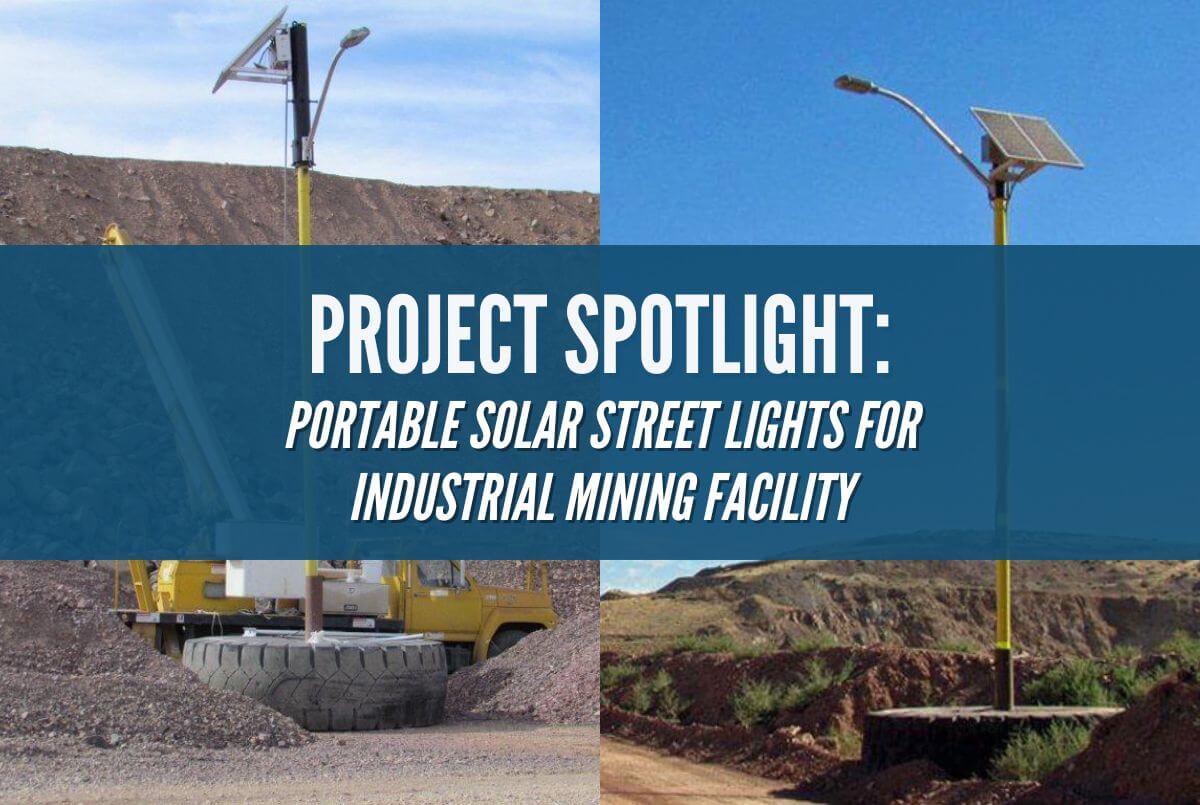


When a large industrial mining company needed to provide lighting for key areas within their massive, constantly changing land mine facility, they turned to SEPCO to help design a fully portable, off-grid solar power lighting solution. The street light systems need to be moved as the terrain changes, and efficient lighting must be provided for the safety and security of the mine workers. Since this cannot be done with traditional electric lights, solar street lighting systems were the best option for the mining company. Take a quick look at how the mining facility accomplished everything it needed with our solar solution.
After thoroughly assessing the mining company’s specific lighting needs and operational requirements, SEPCO engineered a solution that integrates our highly dependable off-grid pole-mounted solar power system with the robust and efficient Genesis LED light fixture. These systems are designed to function for several hours post-dusk during the mine's busiest operational periods, then seamlessly transition to cost-effective, motion-activated lighting for the remainder of the night. This strategic approach significantly reduces the project's overall cost by ensuring the lights only operate when necessary, thereby minimizing solar and battery demands.
As depicted in the project photos, the mining company innovatively embedded our pole-mounted solar street lighting systems into giant tires filled with concrete. This creative method results in a free-standing, highly portable industrial lighting solution that can be effortlessly relocated with a forklift across the extensive mining site. As the terrain evolves, the lights are easily repositioned to new locations, showcasing a truly imaginative use of off-grid solar lighting!
Another way to have movable solar lighting systems is to use a prefab concrete base. These bases are meticulously designed and manufactured in a factory setting to ensure they align perfectly with the anchor bolt pattern of a standard anchor base pole. The process begins with the concrete base being securely installed into the ground, providing a stable and robust foundation. Once the base is in place, the solar pole is mounted on top, creating a reliable and easily relocatable lighting solution.
This design offers significant versatility, allowing the lighting systems to adapt to their environment as the project evolves seamlessly. During the initial phases of development, the solar lighting can be positioned exactly where it is needed most, ensuring optimal illumination and safety. As the project progresses and the landscape changes, the lights can be easily repositioned to new locations, maintaining their effectiveness and utility. Ultimately, when the project nears completion, these solar lighting systems can either find a permanent home in their final positions or be moved to the next development site, ready to provide the same level of reliable and flexible lighting. This adaptability not only maximizes the investment in solar lighting infrastructure but also underscores the sustainable and forward-thinking approach of using renewable energy in dynamic industrial environments.
Finally, one more way to make a solar light system movable is to use helical base poles. These innovative bases feature a long screw-like structure that anchors the pole securely into the ground, functioning similarly to a direct burial pole but with the added benefit of utilizing a standard anchor base pole. This method is particularly advantageous for locations where concrete is either unavailable or impractical to use.
Helical base poles are designed to minimize disruption to the surrounding environment, making them an ideal solution for ecologically sensitive areas or sites where maintaining the natural landscape is a priority. Furthermore, the helical base poles can be easily unscrewed and relocated as needed, offering unparalleled flexibility and adaptability for dynamic project requirements. This approach ensures that the lighting system remains both functional and sustainable, regardless of the changing landscape or project demands.
